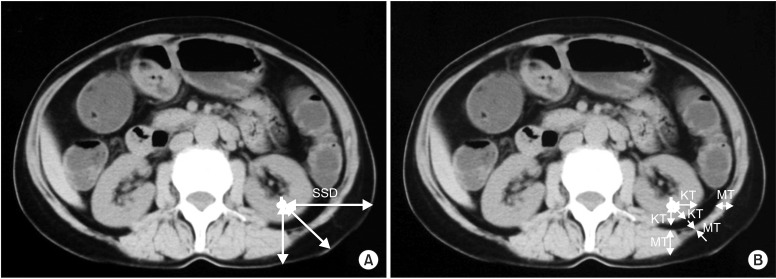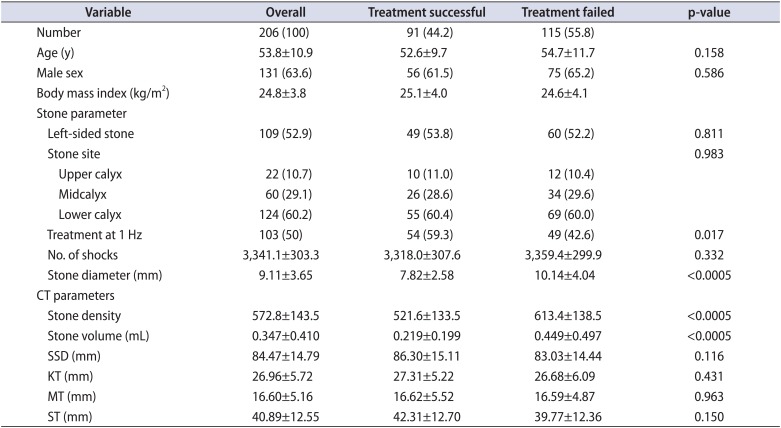The effect of renal cortical thickness on the treatment outcomes of kidney stones treated with shockwave lithotripsy.
引用次数: 12
Abstract
Purpose Because the shock wave passes through various body tissues before reaching the stone, stone composition may affect the treatment efficacy of shock wave lithotripsy (SWL). We investigated the effect of various tissue components along the shock wave path on the success of SWL. Materials and Methods From October 2008 to August 2010, a total of 206 patients with kidney stones sized 5 to 20 mm were prospectively recruited for a study of the factors that affect the outcome of treatment with a Sonolith Vision lithotripter. Successful SWL was defined as either stone-free status or residual fragments <4 mm at 12 weeks. Logistic regression analysis was performed to assess the factors that predicted treatment outcomes. Potential predictors included the patient's age, shock wave delivery rate, stone volume (SV), mean stone density (MSD), skin-to-stone distance (SSD), and the mean thickness of the three main components along the shock wave path: renal cortical thickness (KT), muscle thickness (MT), and soft-tissue thickness (ST). Results The mean age of the patients was 53.8 years (range, 25-82 years). The overall treatment success rate after one session of SWL was 43.2%. The mean KT, MT, and ST were 26.9, 16.6, and 40.8 mm, respectively. The logistic regression results showed that a slower shock wave delivery rate, smaller SV, a lower MSD, and a thicker KT were found to be significant predictors for successful SWL. SSD, MT, and ST were not predictors of successful treatment. Conclusions Among the main tissue components along the shock wave path, a thicker KT was a favorable factor for successful SWL after adjustment for SV, MSD, and the shock wave delivery rate.



肾皮质厚度对冲击波碎石治疗肾结石疗效的影响。
目的:由于冲击波在到达结石前要经过人体各组织,结石成分可能会影响冲击波碎石(shock wave lithotripsy, SWL)的治疗效果。我们研究了激波路径上不同组织成分对SWL成功的影响。材料和方法:2008年10月至2010年8月,前瞻性招募206例5 - 20mm肾结石患者,研究影响Sonolith Vision碎石机治疗结果的因素。成功的SWL被定义为无结石状态或残留碎片。结果:患者的平均年龄为53.8岁(范围25-82岁)。一次SWL治疗后的总治疗成功率为43.2%。平均KT、MT和ST分别为26.9、16.6和40.8 mm。logistic回归结果显示,较慢的冲击波传递率、较小的SV、较低的MSD和较厚的KT是成功SWL的显著预测因子。SSD、MT和ST不是治疗成功的预测因子。结论:在冲击波路径上的主要组织成分中,在调整SV、MSD和冲击波传递率后,较厚的KT是SWL成功的有利因素。
本文章由计算机程序翻译,如有差异,请以英文原文为准。
求助全文
约1分钟内获得全文
求助全文

 求助内容:
求助内容: 应助结果提醒方式:
应助结果提醒方式:


